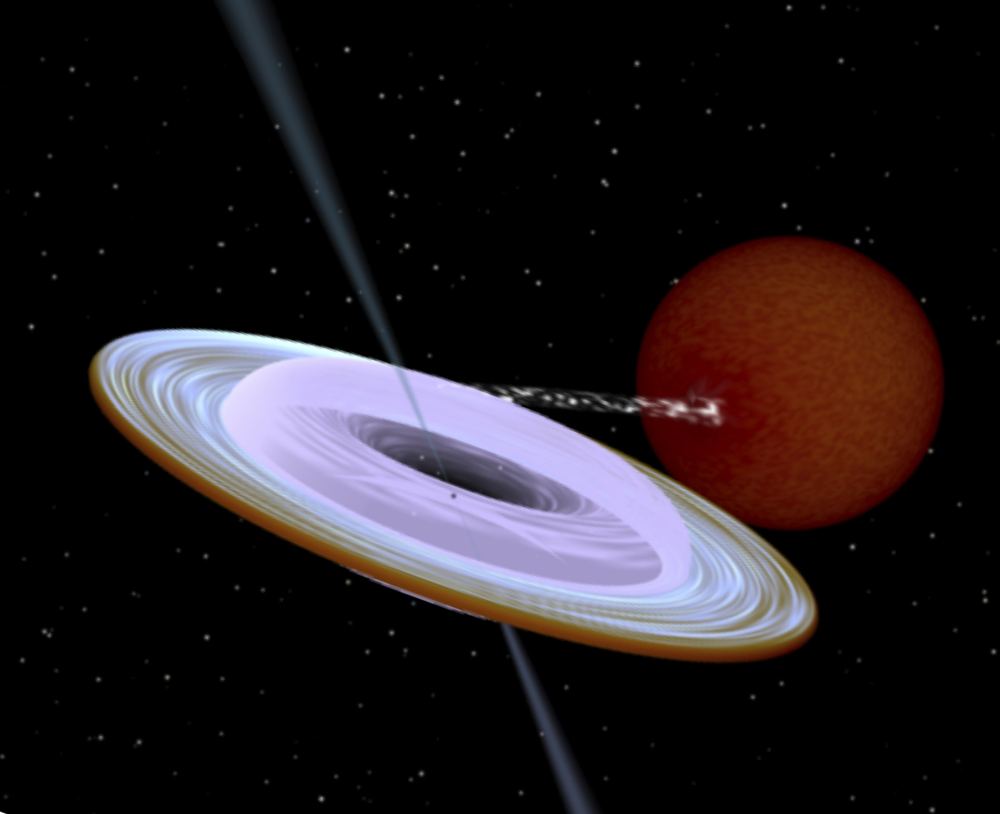The planets in our Solar System all rotate on axes that roughly match the Sun’s rotational axis. This agreement between the axes of rotation is the typical arrangement in any system in space where smaller objects orbit a larger one.
But in one distant binary system, the large central object has an axis of rotation tilted about 40 degrees compared to its smaller satellite. This situation is even more strange because the main body isn’t a star but a black hole.
Continue reading “Astronomers Find a Black Hole That was Somehow Pushed Over Onto its Side”

